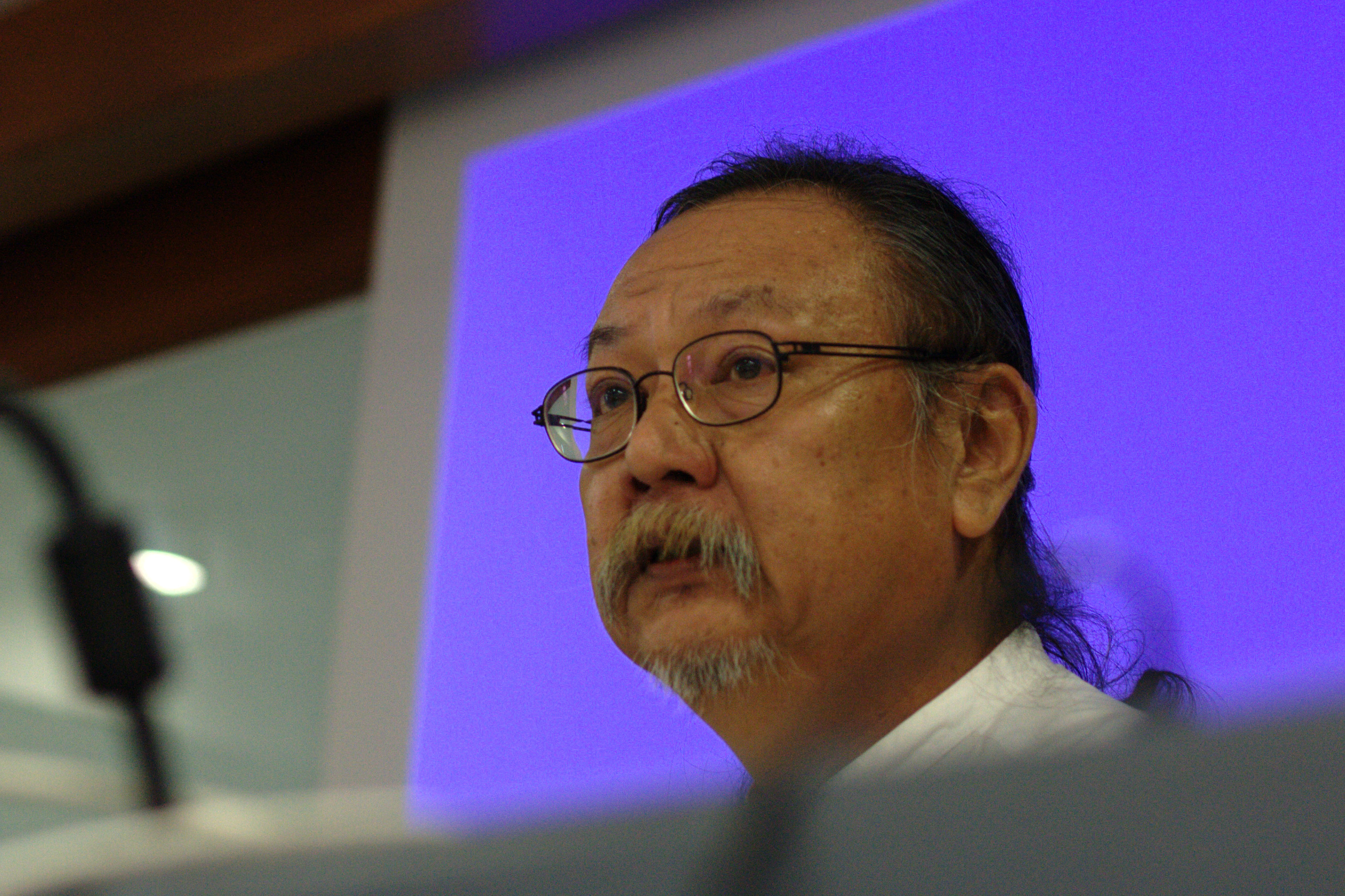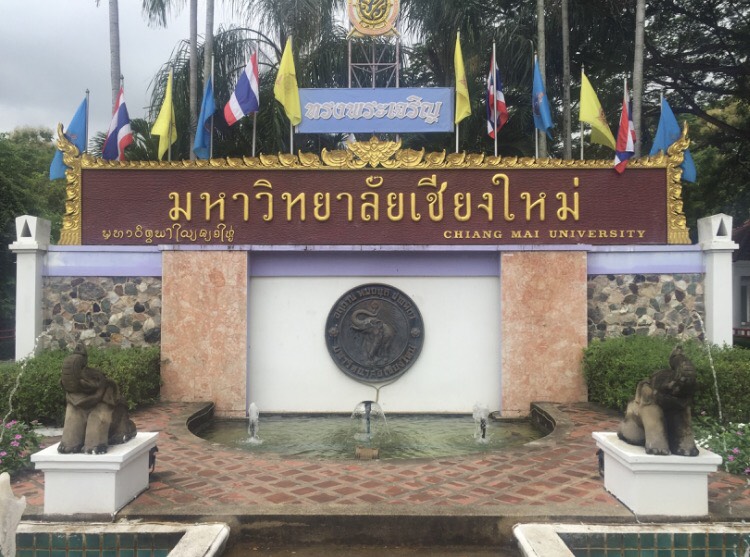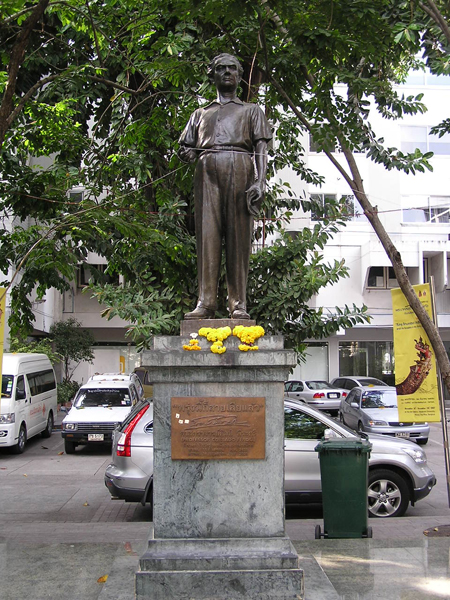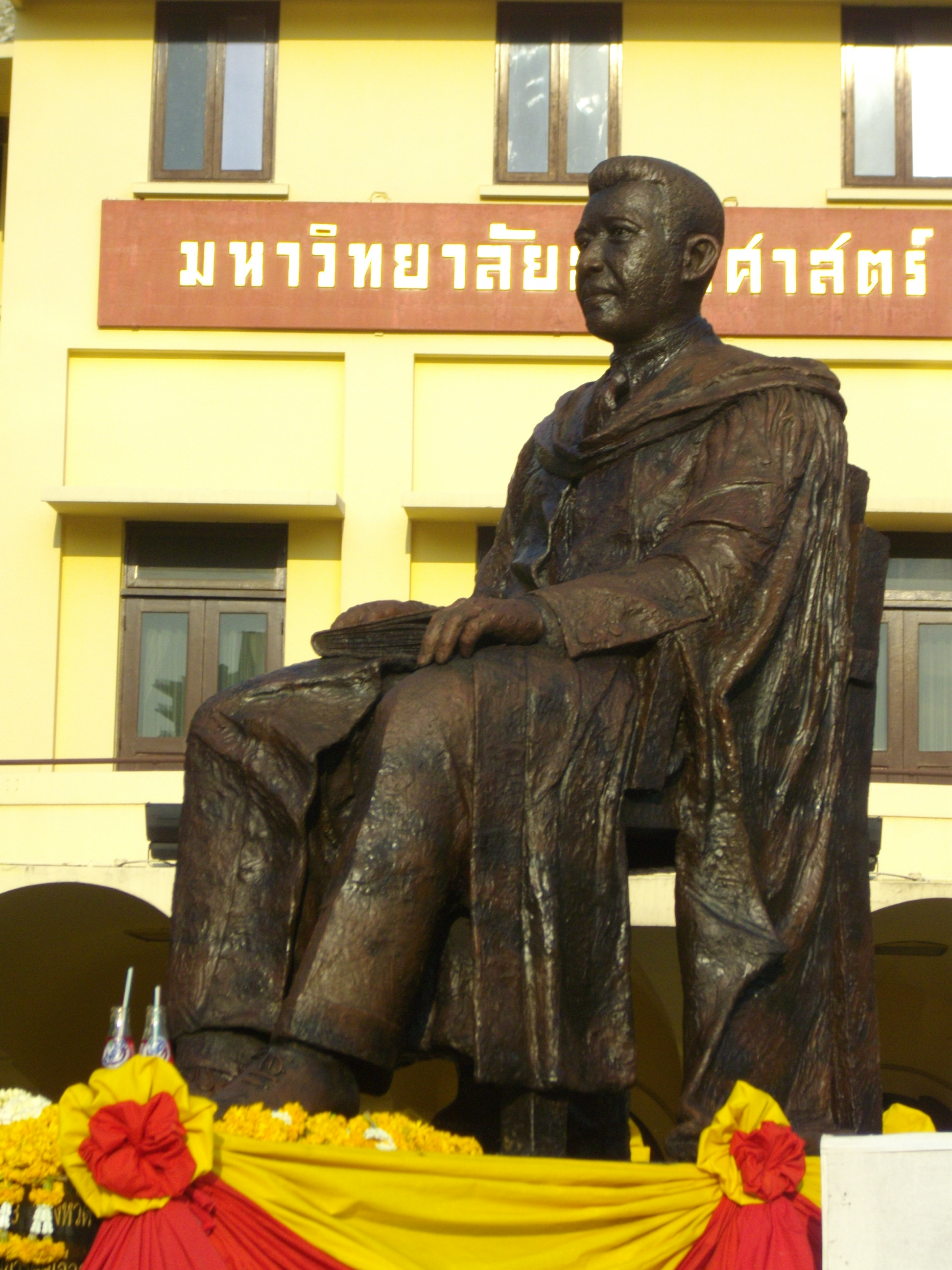|
14 October Uprising
The popular uprising of 14 October 1973 ( th, เหตุการณ์ 14 ตุลา, , ; also , , ) was a watershed event in Thailand's history. The uprising resulted in the end of the ruling military dictatorship of anti-communist Thanom Kittikachorn and altered the Thai political system. Notably, it highlighted the growing influence of Thai university students in politics. Student activism in Thailand the 1950s–1970s Student activism in Thailand grew during the 1950s, as many students became inspired by leftist ideology to mobilize and organize demonstrations and rallies against the pro-American policies of the ruling government. The rise of university students as a political force was also due to the increase in absolute numbers of university students. From 1961 to 1972, the number of university students increased from 15,000 to 150,000, while the number of universities increased from five to seventeen.Prajak Kongkirati, "Thailand: The cultural Politics of Student Re ... [...More Info...] [...Related Items...] OR: [Wikipedia] [Google] [Baidu] |
Ratchadamnoen Avenue
Ratchadamnoen Avenue ( th, ถนนราชดำเนิน, , , also spelled Rajdamnern) is a historic road in the Phra Nakhon and Dusit Districts of Bangkok, Thailand. Ratchadamnoen Avenue may be the most politically charged thoroughfare in the capital, as its history captures the ebb and flow of Thai ideological struggles over Thai governance in the 20th and 21st centuries. History Ratchadamnoen Avenue was commissioned by King Chulalongkorn following his first visit to Europe in 1897. Construction took place from 1899 to 1903. The road consists of three segments, named Ratchadamnoen Nai, Ratchadamnoen Klang, and Ratchadamnoen Nok (Inner, Middle, and Outer Ratchadamnoen, respectively). It links the Grand Palace to Dusit Palace in the new royal district, terminating at the Royal Plaza in front of the Ananta Samakhom Throne Hall. Inspired by the Champs-Élysées and other European boulevards, the King used the road as a route for grand royal parades (Ratchadamnoen literal ... [...More Info...] [...Related Items...] OR: [Wikipedia] [Google] [Baidu] |
Seksan Prasertkul
Seksan Prasertkul ( th, เสกสรรค์ ประเสริฐกุล, born 1949) is a Thai author who was awarded the title National Artist of Thailand in 2009. Seksan became a student leader at Thammasat University and was active in the October 1973 protests against the military government of Thanom Kittikachorn. Seksan is the author of poetry, stories, and his autobiography, was made into a movie, ''The Moonhunter.'' Early life Seksan is the son of a fishing-boat builder and a market vendor. He graduated from high school at Chonkanyanakul School in Chonburi province, and received an AFS scholarship. He was an exchange student at a high school in the United States in 1967 and 1968. On his return to Thailand, he gained admission to Thammasat University by his high scores on the nationwide university entrance exam. Leading up to 14 October 1973 Sulak Sivaraksa "initiated forums for students to discuss current social issues. Among those attending was Seksan", accord ... [...More Info...] [...Related Items...] OR: [Wikipedia] [Google] [Baidu] |
Khon Kaen University
Khon Kaen University ( th, มหาวิทยาลัยขอนแก่น) or KKU (มข.) is a public research university, and it is one of the most prestigious universities in Thailand. The university was the first institution of higher education in the northeastern Thailand and remains the oldest and the most competitive university in the region. The university is a hub of education in northeast Thailand. It is a widely recognized university in Asia with strong emphasis on medicine, engineering, science, agriculture and social science. Khon Kaen University was ranked 21st in Southeast Asia by ''Time Higher Education'' in 2009, and 4th in Thailand by The Office of Higher Education Commission. History In 1941 during the reign of King Ananda Mahidol with the government of Field Marshal Plaek Phibunsongkhram as Prime Minister, there have been policies and projects to expand higher education to the provinces. For the northeastern region, a university have been established ... [...More Info...] [...Related Items...] OR: [Wikipedia] [Google] [Baidu] |
Chiang Mai University
Chiang Mai University ( CMU; th, มหาวิทยาลัยเชียงใหม่) is a public research university in northern Thailand founded in 1964. It has a strong emphasis on engineering, science, agriculture, and medicine. Its instructional mission includes undergraduate, graduate, professional and continuing education offered through resident instruction. Its main campus lies between Chiang Mai town and Doi Suthep in Chiang Mai, Chiang Mai Province. The university was the first institution of higher education in northern Thailand, and the first provincial university in Thailand. Campuses Chiang Mai University has four campuses, three of them in Chiang Mai and one in Lamphun, which together cover about .Our Campuses - Chiang Mai University There are 18 housing complexes located on ... [...More Info...] [...Related Items...] OR: [Wikipedia] [Google] [Baidu] |
Mahidol University
Mahidol University (Mahidol), an autonomous research institution in Thailand, had its origin in the establishment of Siriraj Hospital in 1888. Mahidol had an acceptance rate for Medicine of 0.4% as of the 2016 academic year. Becoming the University of Medical Science in 1943, it has been recognized as the country's fourth public university. The university was later renamed in 1969 by King Bhumibol Adulyadej after his father, Prince Mahidol of Songkhla, the "Father of Modern Medicine and Public Health of Thailand". The university originally focused on health sciences but expanded to other fields in recent decades. It hosted Thailand's first medical school, the Siriraj Medical School. Today, Mahidol offers a range of graduate (mostly international) and undergraduate programs from natural sciences to liberal arts with remote campuses in Kanchanaburi, Nakhon Sawan, and Amnat Charoen provinces. There are a total of 629 programs offered from 17 faculties, 6 colleges, 9 research insti ... [...More Info...] [...Related Items...] OR: [Wikipedia] [Google] [Baidu] |
Silpakorn University
Silpakorn University (SU.) ( th, มหาวิทยาลัยศิลปากร; ) is a national university in Thailand. The university was founded in Bangkok in 1943 by Tuscan–born art professor Corrado Feroci, who took the Thai name Silpa Bhirasri when he became a Thai citizen. It began as a fine arts university and now includes many other faculties as well. In 2016, it has 25,210 students. History Silpakorn University was originally established as the School of Fine Arts under Thailand's Fine Arts Department in 1933. The school offered the only painting and sculpture programs and waived tuition fees for government officials and students. Its creation owes much to the almost lifetime devotion of Professor Silpa Bhirasri, an Italian sculptor (formerly Corrado Feroci) who was commissioned during the reign of King Rama VI to work in the Fine Arts Department. He subsequently enlarged his classes to include greater members of the interested public before setting up the ... [...More Info...] [...Related Items...] OR: [Wikipedia] [Google] [Baidu] |
Kasetsart University
Kasetsart University ( th, มหาวิทยาลัยเกษตรศาสตร์; ), commonly known and referred to as Kaset or KU, is a public research university in Bangkok, Thailand. It is the largest university in Thailand. It was Thailand's first agricultural university and Thailand's third oldest university. It was established on 2 February 1943 to promote subjects related to agricultural science. Since then, Kasetsart University has expanded its subject areas to cover life sciences, science, engineering, social sciences, and humanities. Kasetsart University's main campus is in Bangkhen, northern Bangkok, with several other campuses throughout Thailand. History In 1902, King Chulalongkorn attempted to promote the country's silk, silverware, and weaving industries. He hired Dr Kametaro Toyama, from the University of Tokyo, to train Siamese students in Japanese silk and weaving crafts. In 1904, the School of Sericulture was founded at Tambon Thung Sala ... [...More Info...] [...Related Items...] OR: [Wikipedia] [Google] [Baidu] |
Thammasat University
Thammasat University (Abbreviation, Abrv: TU th, มธ.; th, มหาวิทยาลัยธรรมศาสตร์, , ) is a public research university in Thailand with campuses in Tha Phra Chan area of Phra Nakhon District near the Grand Palace in the heart of Bangkok; in Rangsit, 42 kilometers north of Bangkok; in Pattaya, a resort city on the eastern seaboard of Thailand; and in Lampang Province. , Thammasat University has over 33,000 students enrolled in 33 faculties, colleges, and institutes and 2,700 academic staff. Thammasat is Thailand's second oldest List of universities and colleges in Thailand, university. Officially established to be the national university of Thailand on 27 June 1934, it was named by its founder, Pridi Banomyong, the University of Moral and Political Sciences ( th, มหาวิทยาลัยวิชาธรรมศาสตร์และการเมือง; ). It began as an Open-door academic policy, open university, wi ... [...More Info...] [...Related Items...] OR: [Wikipedia] [Google] [Baidu] |
Chulalongkorn University
Chulalongkorn University (CU, th, จุฬาลงกรณ์มหาวิทยาลัย, ), nicknamed Chula ( th, จุฬาฯ), is a public and autonomous research university in Bangkok, Thailand. The university was originally founded during King Chulalongkorn's reign as a school for training royal pages and civil servants in 1899 (B.E. 2442) at the Grand Palace of Thailand. It was later established as a national university in 1917, making it the oldest institute of higher education in Thailand. During the reign of Chulalongkorn's son, King Vajiravudh, the Royal Pages School became the Civil Service College of King Chulalongkorn. The Rockefeller Foundation was instrumental in helping the college form its academic foundation. On 26 March 1917, King Vajiravudh renamed the college "Chulalongkorn University". Chulalongkorn University is a comprehensive and research-intensive university. It is ranked as the best university in Thailand in many surveys, quality of st ... [...More Info...] [...Related Items...] OR: [Wikipedia] [Google] [Baidu] |
Peace Corps
The Peace Corps is an independent agency and program of the United States government that trains and deploys volunteers to provide international development assistance. It was established in March 1961 by an executive order of President John F. Kennedy Executive Order 10924 and authorized by Congress the following September by the Peace Corps Act. Kennedy first publicly proposed the Peace Corps during his 1960 presidential campaign as a means to improve America's global image and leadership in the Cold War; he cited the Soviet Union's deployment of skilled citizens "abroad in the service of world communism" and argued the U.S. must do the same to advance values such as democracy and liberty. The Peace Corps was formally established within three months of Kennedy's presidency, garnering both bipartisan congressional support and popular support, particularly among recent university graduates. The official goal of the Peace Corps is to assist developing countries by providing skil ... [...More Info...] [...Related Items...] OR: [Wikipedia] [Google] [Baidu] |
Sarit Thanarat
Field Marshal Sarit Thanarat (also spelt ''Dhanarajata''; th, สฤษดิ์ ธนะรัชต์, ; 16 June 1908 – 8 December 1963) was a Thai general who staged a coup in 1957, replacing Plaek Phibunsongkhram as Thailand's prime minister until Sarit died in 1963. He was born in Bangkok, but grew up in his mother's home town in Isan-speaking northeastern Thailand and considered himself from Isan people, Isan. His father, Major Luang (title), Luang Ruangdetanan (birth name Thongdi Thanarat), was a career army officer best known for his translations into Thai of Cambodian literature.Gale, T. 2005. Encyclopedia of World Biographies. He had partial Chinese ancestry. Military career Sarit Thanarat was educated at a monastery school, and entered Chulachomklao Royal Military Academy in 1919, not completing his military studies until 1928, after which he was commissioned as a second lieutenant. During World War II he served as commander of an infantry battalion and took par ... [...More Info...] [...Related Items...] OR: [Wikipedia] [Google] [Baidu] |
Politics Of Thailand
Until 22 May 2014, the politics of Thailand were conducted within the framework of a constitutional monarchy, whereby the prime minister is the head of government and a hereditary monarch is head of state. The judiciary is independent of the executive and the legislative branches. Following the coup d'état of 22 May 2014 revoking the 2007 constitution, a military organization called National Council for Peace and Order (NCPO) had taken over administration. The chief of NCPO abolished the national assembly and assumed the responsibilities of the legislative branch. Under the martial law enforced throughout the kingdom, military courts have been tasked to be responsible for some cases that are normally under the civilian courts. However, the court system, including the Constitutional Court, still remains in existence, even without the constitution. The NCPO was formally dissolved following the swearing-in of the new cabinet on 16 July 2019. Thai kingdoms and the late Kingdom o ... [...More Info...] [...Related Items...] OR: [Wikipedia] [Google] [Baidu] |



.jpg)


.jpg)
.jpg)